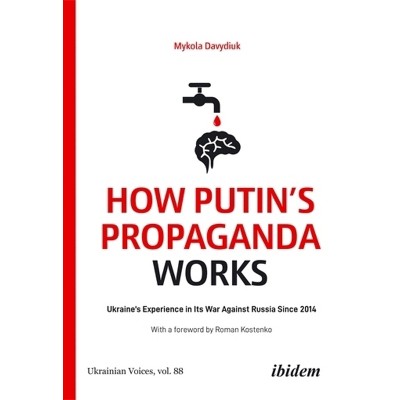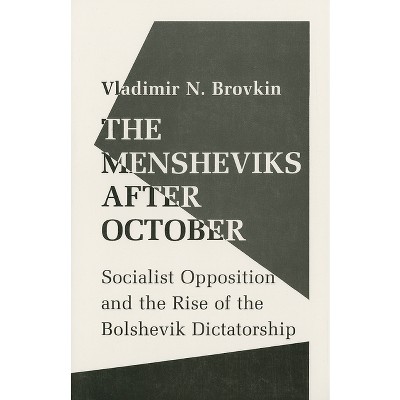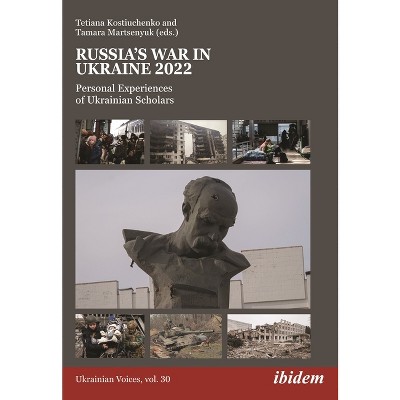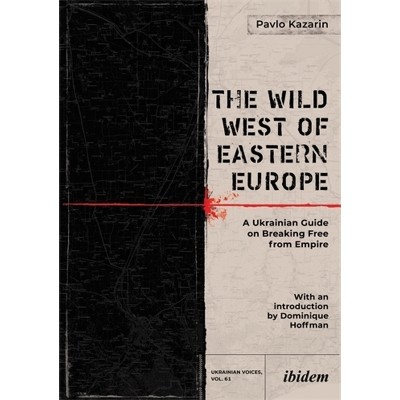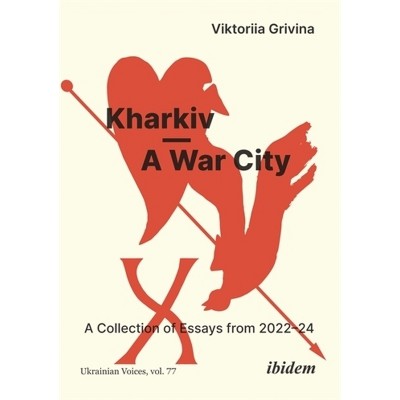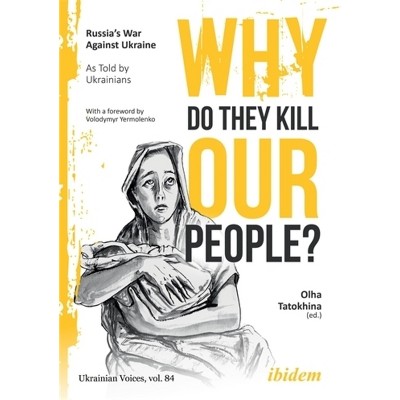Sponsored

Kharkiv Is a Dream - (Ukrainian Voices) by Hjørdis Clemmensen & Viktoriia Grivina & Vasylysa Shchogoleva (Paperback)
In Stock
Sponsored
About this item
Highlights
- When the war hit Kharkiv in 2022, the urban space transformed at a scale impossible for its inhabitants and artistic community to process.
- About the Author: Hjørdis Clemmensen is a Danish anthropologist and writer based in Vienna, Austria, previously residing in Kyiv, Ukraine.
- 250 Pages
- Social Science, Sociology
- Series Name: Ukrainian Voices
Description
About the Book
The authors zoom in on three events over the past decade that reflect how different actors used the cityscape of Kharkiv to make sense of and shape their context.Book Synopsis
When the war hit Kharkiv in 2022, the urban space transformed at a scale impossible for its inhabitants and artistic community to process. As it turns out, the urban space of Kharkiv was difficult to process long before the impact of drones and missiles. Kharkiv has been transforming for centuries, collecting monuments and memories from the ebbs and flows of history. The authors zoom in on three events over the past decade that reflect how different actors used the cityscape of Kharkiv to make sense of and shape their context: Architect and visual artist Vasylysa Shchogoleva explores the urban space of Kharkiv in 2023 as a place of healing and compassion. Cultural anthropologist Viktoriia Grivina takes us back to 2018 when a piece of street art on a wall became the epicenter of a community conflict. Anthropologist Hjørdis Clemmensen opens a window to the workshop of a group of architecture students in 2013 who wished to not only influence the space around them but also time itself.
Review Quotes
Cities have personalities, identities, shaped over decades, if not centuries. In Kharkiv a few years ago when Ukrainian civil society blossomed, a first generation in their 20s emerged without memories of the Soviet system. These youths pulled Kharkiv out of her past and into the contemporary, global world. And then the invasion, the war was upon them. Three women, each of them an expert in her field, have written this important book where their personal stories illustrate from where Kharkiv draws her identity. Their voices are voices in a global dialogue among stakeholders in urbanism; the architects, students, scholars, developers, politicians, artists and last but not least the inhabitants. How does art build the identity of a city? The authors, exploring where Kharkiv stands now and what brought the city there, ask the crucial question: Whose voices will be heard when it comes to rebuilding war-torn Kharkiv and Ukraine? They also consider how to ensure that the voices of all may be listened to before anyone jumps headlong into the future.--Jan Axel Nordlander, Senior Adviser (rtd.), Färgfabriken Center for Society, Art and Architecture, Stockholm
Having spent many years working on books about the architecture of Ukraine and Kharkiv, I was pleasantly surprised to learn about this book by a team of three women: Hjørdis Clemmensen, Viktoriia Grivina, and Vasylysa Shchogoleva. Kharkiv is a unique, multi-layered city with a complex history, mostly known for its modernist architecture of the 1920s and '30s and the tragic fate it suffered under Soviet totalitarianism. During the current war, Kharkiv, or rather its destruction, has often appeared in the columns of publications worldwide. However, it would be unfair to Kharkiv and its people to be represented exclusively by glorifying myths created by Soviet authorities and the ruins caused by Russia's neo-imperialist aggression. Kharkiv, like any other city, is much more than material space or architecture. Now, in the third year of continuous shelling and the 10th year since the beginning of Russia's attack on Ukraine, locals are experiencing prolonged traumatization. The conflict has caused the death of thousands of Kharkiv residents, displacement, loss of homes, disruption of stable educational processes for children, and problems in health care. Yet, it has become clear that cities are not sustained by walls, stone, or reinforced concrete, but by the social bonds of their citizens. These almost invisible, yet fundamental aspects of city life guarantee its existence and resistance. This is Kharkiv. Even if the aggressor destroys all our material possessions, they cannot destroy our most precious asset--the connections between people. These connectors are not transport infrastructure, the built environment, or cultural institutions. Kharkiv residents unite and hold together something greater. Is it shared values, solidarity, self-organization, or a refusal to accept suppression of independence? I am confident that the multi-perspective view of the authors on Kharkiv's communities, spaces of cooperation, social processes, and human connections--both with place and with other people--is the key. While it may not solve the confusing puzzle of Kharkiv's spatial history, it at least demonstrates the piercing and complex nature of its present.--Ievgeniia Gubkina, Tutor in History and Theory, Bartlett School of Architecture, London
Kharkiv, as a city, has both a very long and a very short memory. There is no nativity in Kharkiv's remembrance--it's an active skill that this city practices all the time or, depending on circumstances, doesn't practice at all. A city of students, a city of fast business and slow change, a city that thousands of young professionals leave every year, only some of whom return. For me, as a lecturer at the Kharkiv School of Architecture, my personal goal and mission has always been to build such connections between future architects and the city that would form a community of young proactive professionals devoted to Kharkiv, agents of change who will be captivated by its colossal opportunities and contribute to the formation of new powerful institutions that Kharkiv so desperately needs. A year before the start of the full-scale invasion, the Kharkiv School of Architecture celebrated its first anniversary. The second anniversary took place in Lviv, where the school, along with students and teachers, was forced to evacuate after February 24th. We all faced the challenge of finding and building a new type of connection with our city, Kharkiv, while being outside of Kharkiv. For all three authors, this is a personal practice that they have already undertaken and are ready to present its results. After all, each of them has this special experience of leaving the city and returning to it. In my opinion, the diversity of perspectives through which the context of Kharkiv is presented in this book can become a kind of tutorial or set of tools that illustrates ways of organizing memory and living testimonies of the turbulent life of a city that always happens outside of rules and systems.--Mariia Tselik, Studio Lecturer and architect, Kharkiv School of Architecture
This remarkable book is a welcome addition to English-language literature, which has rarely turned its full and undivided attention to Ukraine's 'eastern capital' as these three authors do. And how grateful we are that they did, for only such an interdisciplinary approach as this can do justice to a city that has, in the last decade, been completely transformed by globalization, revolution, and war, all while remaining true to itself--and remaining truly Kharkiv. Clemmensen, Grivina, and Shchogoleva offer new and necessary insights for anyone who seeks to understand Ukraine's past, present, and future.--Jennifer J. Carroll, Associate Professor of Anthropology, North Carolina State University
About the Author
Hjørdis Clemmensen is a Danish anthropologist and writer based in Vienna, Austria, previously residing in Kyiv, Ukraine. She holds an M. Sc. in Cultural and Social Anthropology from the University of Copenhagen. Her research focuses on urban identity in Kharkiv. Hjørdis's diverse career spans academia and the IT sector.
Viktoriia Grivina holds two Master's degrees in English, German and Cultural studies from Kharkiv and Tübingen University, and studied also in Bergamo and St Andrews. In 2020-21, she participated in the (Un)Archving (Post)Industry Project dedicated to the photographic legacy of the Donbas.
Vasylysa Shchogoleva, M. A., studied Architecture at the Hochschule Anhalt at Dessau-Roßlau (Germany) and at Kharkiv National University of Civil Engineering and Architecture. She worked as an architect both in Ukraine and Germany while developing her practice as a visual artist with a focus on art in public space.
Bohdan Volynskyi is an architect and founder of the "dash!" Design School for Children in Kharkiv.
Shipping details
Return details
Frequently bought together


